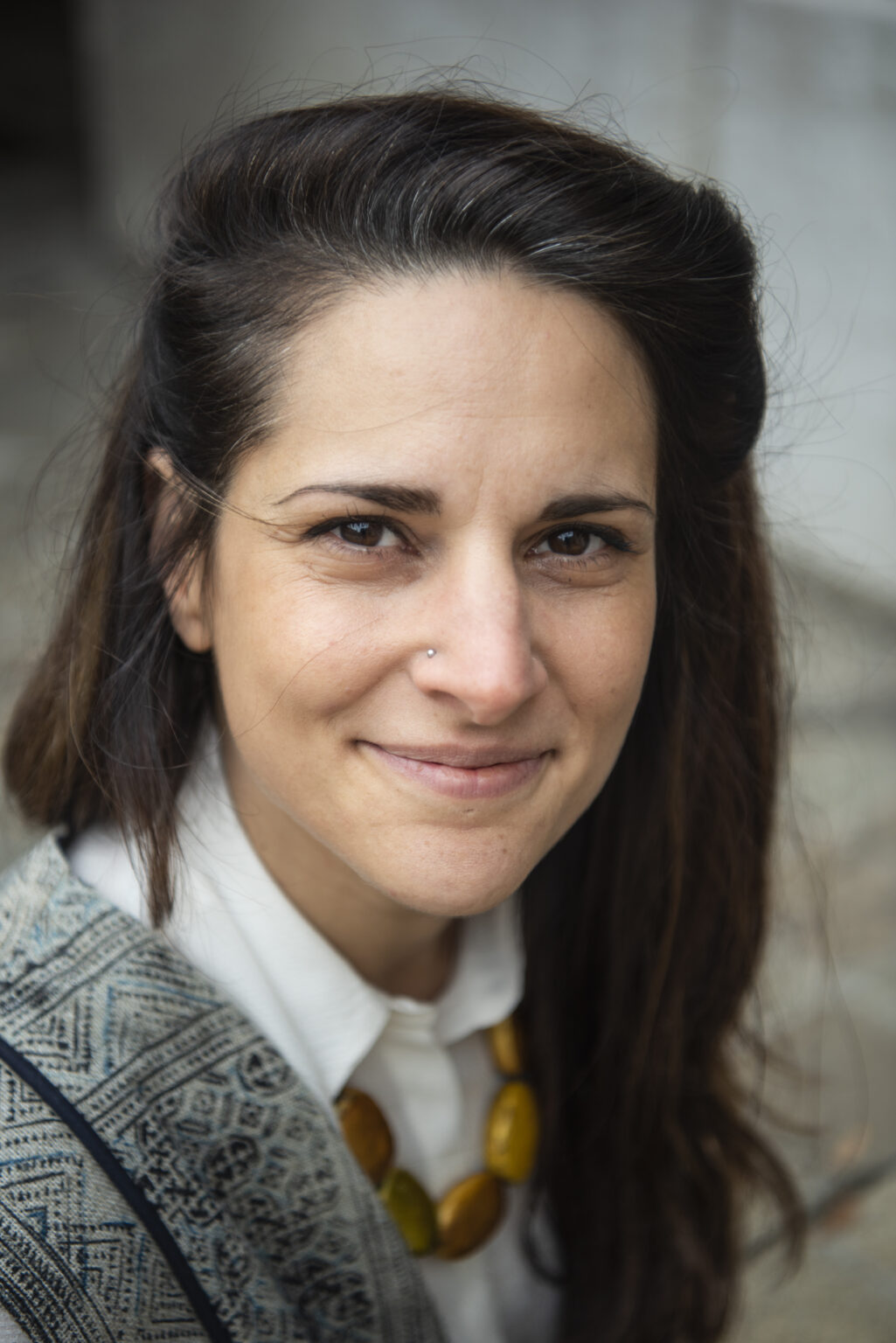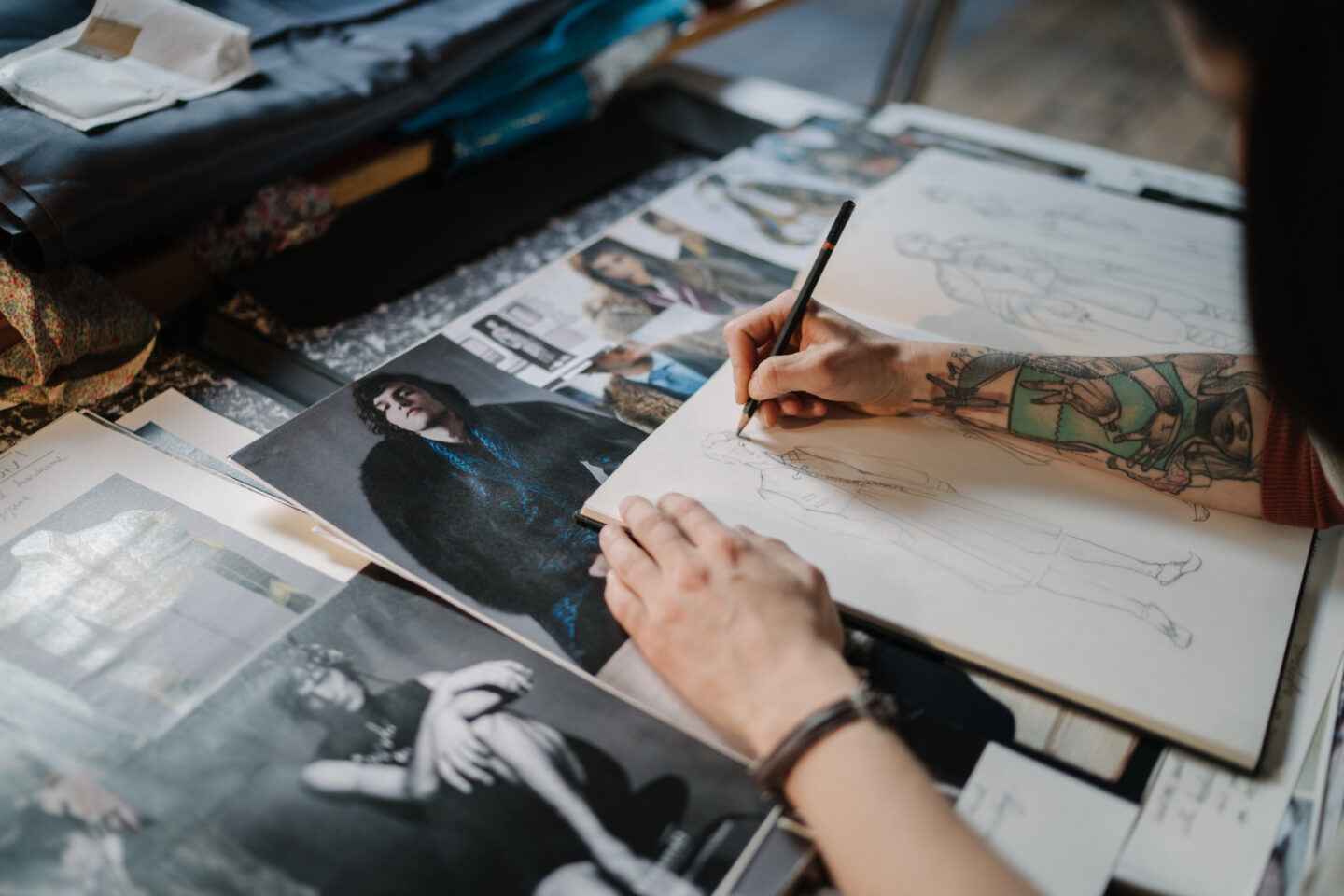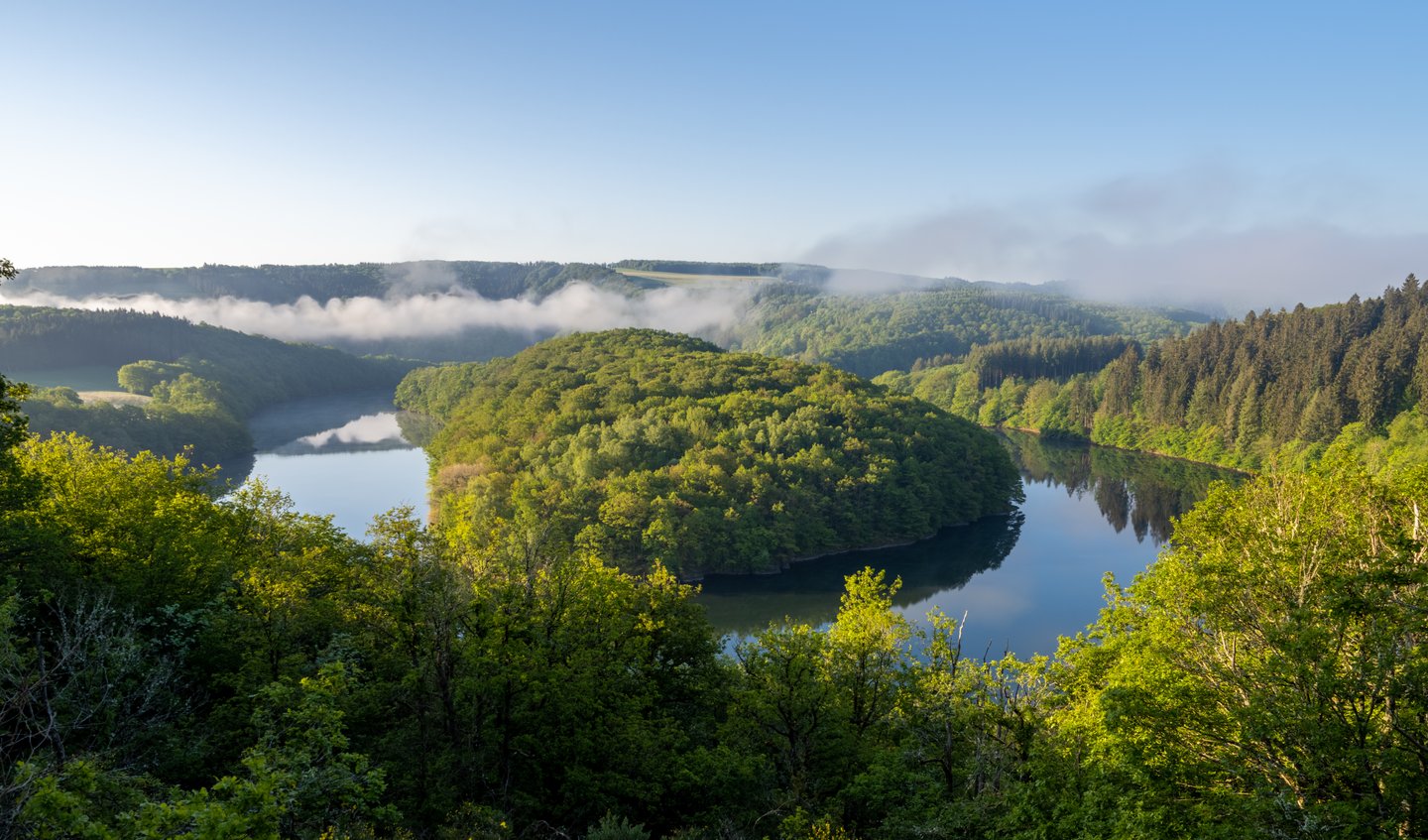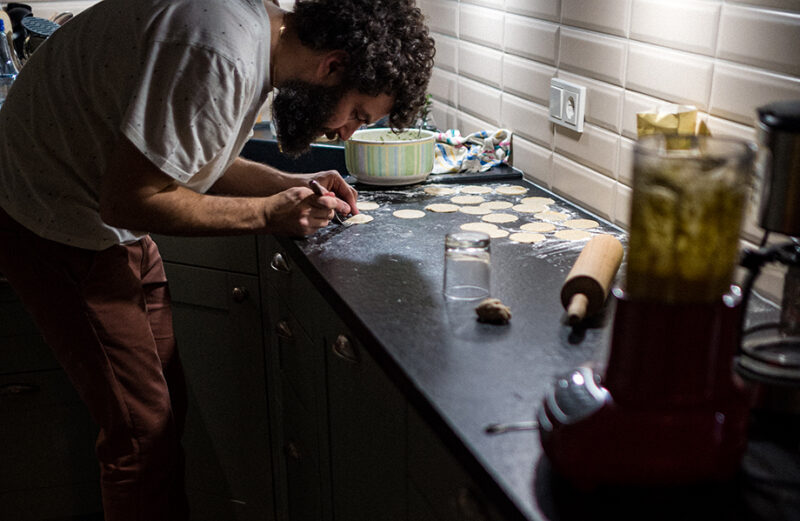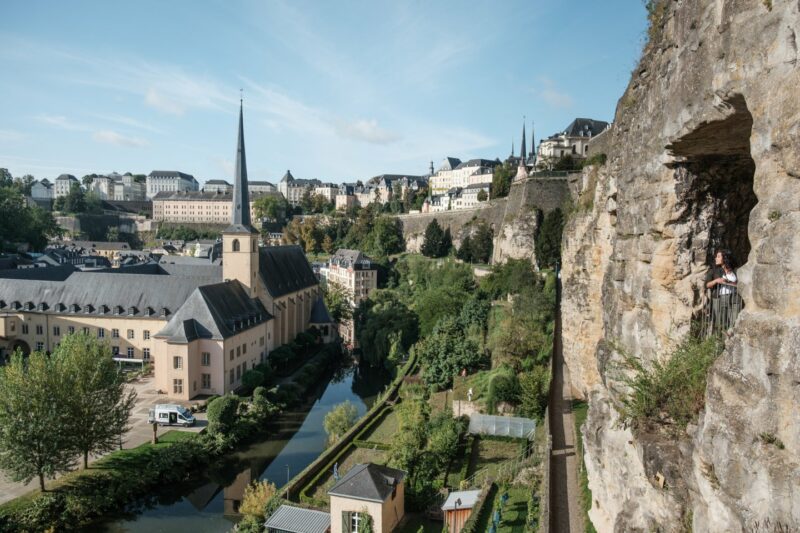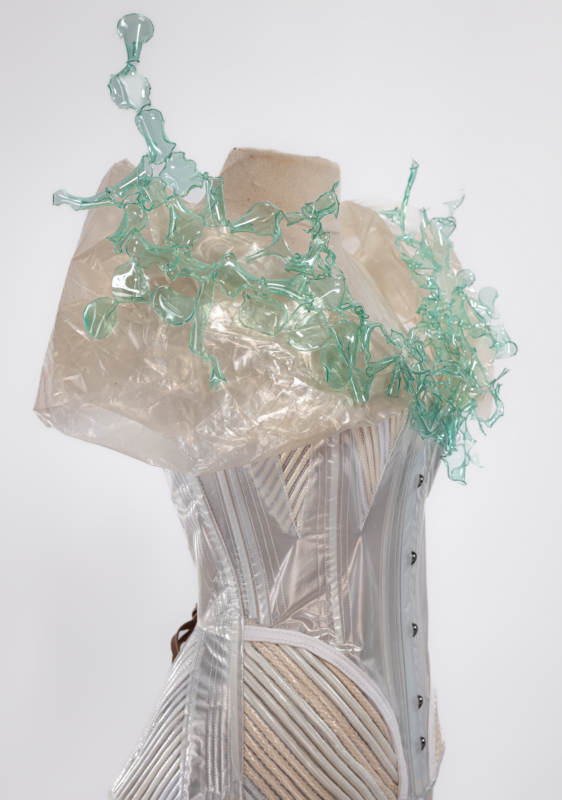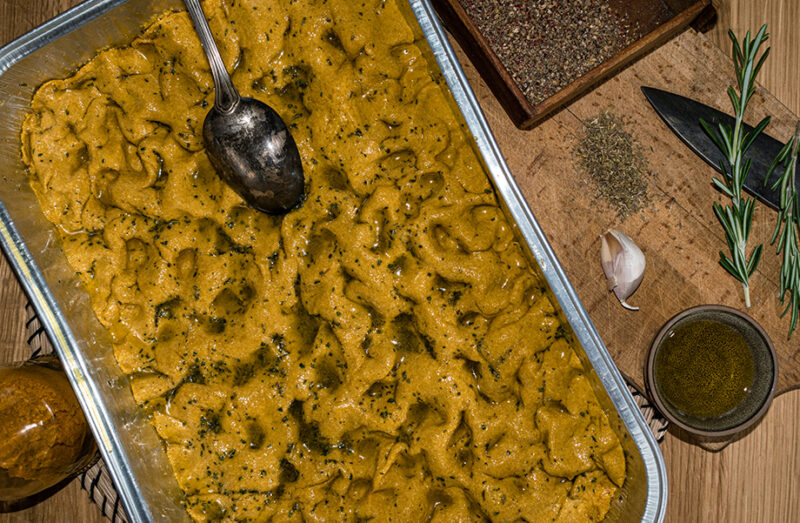Caroline Koener’s creative world is stitched together by intuition, detail, and care. Based in a small village just outside Luxembourg, her work unfolds across borders and disciplines – whether she’s designing for film, theatre, or dance. Her first professional assignment involved creating 40 costume patterns for a dance performance by Helen van den Kerchove. Costumes are more than just fabric for her – it’s a narrative tool, a second skin that carries memory and character.
In 2018, her growing interest in sustainability led her to rethink how we consume and produce clothing. This resulted in Huddelafatz, her own local production initiative inspired by the iconic bleu de travail, rooted in Luxembourg’s artisanal and industrial heritage. Today, alongside her costume work, she hosts sewing and upcycling workshops, encouraging others to repair, reinvent, and reconnect with what they wear. Her practice blends artistry with activism – quietly shaping a more conscious and creative future, one stitch at a time.
© Courtesy of the artist
Which place do you currently call home and where do you work on your projects?
I live in a small village outside of Luxembourg and I work in many different places. I work a lot from my own Workspace but I also work in the city and other towns, as well as abroad, when the project calls for it.
Do you have a favourite place in your area where you like to relax and linger?
I go to the forest or fields.
© Visit Luxembourg
Are there any urgent political issues or problems in your region?
I do not like to talk much about politics. But in the matter of my work, I can affirm that the high taxes we pay as independent/freelance workers is an issue. Considering how much we make in a country where life gets ever more expensive and most salaries are high, it is hard to make a profit. I rather do what I love, but the price to freedom is high.
In opposition to this, there are the multinationals as well as financial institutions including investment funds businesses, which are benefitting important fiscal advantages, whereas lambda citizens including artists and artisans are facing considerable financial burdens of all kind. The country stays rich by profiting from the interests paid by those big companies. This makes everything so controversial, for example; the Ministry of Culture is part of the state, so we can assume that the budgets for much of our cultural scene, is being financed by this too. I have a hard time getting my head around this stuff.
In your opinion, what has developed well in the last 5 years – and what has not?
From my personal perspective: I suppose that the film industry has grown, but the shoots are now mostly abroad, which makes it hard to have parallel activities in the field of textile at the same time.
Then there is the growing demand of the public for sustainable products and conscious consuming as well as the motivation to learn how to fix instead of buying new. For example I have been giving a lot of up-cycling workshops and sewing courses the past years, and the demand keeps growing.
From the country’s perspective:What is still developing very well and has for at least the past 30 years is the financial sector! Developing for the worst is definitely the real estate sector. Rents are constantly increasing and general access to housing is decreasing. Many residents go live abroad because of this.
Do you know a hidden gem when it comes to local manufacturers – whether it’s arts and crafts, sustainable products or food?
There’s the Kirsch family, who cultivates vegetables “Lëtzebuerger Geméis“. The Lët’z Refashion Shop in the City sells clothes from local artists and designers, as well as Second-hand clothes. You can find my workwear fashion brand “Huddelafatz” there too.
In Dudelange you can find VEWA, which is a space dedicated to creating and sharing in community. It is located on an old steel factory site and reflects well what Luxembourg was about before the financial boom era. It all started with a few artists who wanted to make art and organise events around the subject of our industrial heritage. ARBED, is how Luxembourg first got internationally renowned, by exporting steel on a worldwide scale. We have a long history of migration here, starting as early as the 1890’s many workers came from Italy and other countries to work in the steel industry. This is also the story of how I was born in this country. VEWA is still run by an artist’s collective called DKollektiv, which I am also a member of. There are many inclusive activities and events going on, free for everyone to participate. Steel, wood, photography, bike-repair, textile, food, music and many more workshops and events are being offered to the public. You should definitely check it out on social media and see what’s on next.
Do you have a secret restaurant tip you would like to share with us?
I like Rucolino a vegan restaurant in Dudelange owned by a friend.
© Rocalino
What are your 3 favourite apps that you use every day and couldn’t live without?
Do you have any favourite newspapers or online magazines? And how do you keep up to date with politics or social and cultural issues?
For the news I mostly listened to the radio –Radio 100,7 FM– in my car or during breakfast.
A local newspaper I read sometimes is The Land. But whenever there is a subject in the news that I am more interested about, I like to read from many different sources in order to cross examine what’s being said by whom. I like to keep distant with the news and protect myself from forging too strong opinions on subjects I know I won’t get the whole picture anyway. The opinions of ignorant people is dangerous to me.
Imagine you could be mayor for a year – what would you change?
First of all I am not cut out for politics. This said, I guess I would try to adapt certain salaries and obviously taxes, but I’m not sure that a mayor of a small village can do that… Otherwise I would favour local food production, shops and manufacturers and plant a ton of trees.
© Visit Luxembourg
One last question: If you could choose another place to live – regardless of financial or time constraints – which one would you choose?
On a high cliff facing the sea.
© Raymond Camporese
